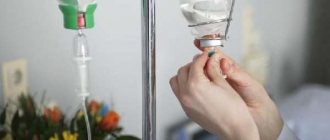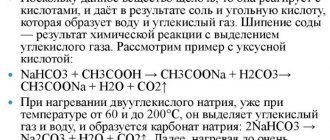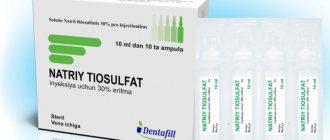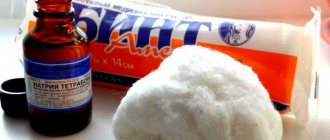Release form
To dissolve the medicinal substance for intramuscular and subcutaneous injections, a solution in ampoules is dispensed from pharmacies. It is used for diluting medicine, as well as for intravenous drips, enemas and external use. The medicine "Sodium chloride" is available in bottles of one hundred, two hundred, four hundred and one thousand milliliters.
For intravenous injections and external use, a hypertonic solution is used in bottles of two hundred and four hundred milliliters. For oral use - 0.9 gram tablets. To use, the tablet must be dissolved in one hundred milliliters of warm water. A nasal spray is used to treat the nasal cavity.
Price
Isotonic saline solution of sodium chloride is available in ampoules of 5 and 10 ml and bottles of 100-500 ml. Depending on the volume of the product, its cost is determined. It is completely low and amounts to:
- 100 ml bottle - 26 rubles.
- 200 ml bottle - 29 rubles.
- A bottle for 250 - 32 rubles.
- 400 ml bottle - 31.50 rubles.
- 500 ml bottle - 29 rubles.
- Ampoule 5 ml N1 - 2.28 rubles.
- Ampoule 10 ml N1 - 2.55 rubles.
Photo gallery:
pharmachologic effect
The medicine “Sodium chloride 0.9%” is responsible for maintaining constant blood pressure. Its required amount enters the body along with food.
Various pathologies (diarrhea, vomiting, burns), which are accompanied by a strong release of sodium chloride, cause a lack of sodium and chlorine. This leads to increased blood density. Smooth muscle spasms, dysfunction of the central nervous system and blood microcirculation may also occur.
But due to osmotic pressure, the solution is not retained in the arterioles. After an hour, no more than half of the injected drug remains in the capillaries.
This explains the low effectiveness of the drug for blood loss. The detoxifying, plasma-substituting properties of sodium chloride (0.9 percent) are widely used in modern medicine.
When administered intravenously, a hypertonic solution increases diuresis and also replenishes the lack of sodium and chlorine.
Side effects
Sometimes unwanted effects occur during treatment.
They look like this:
- acidification of the body;
- excess moisture;
- low potassium levels.
But usually they appear when used incorrectly. Most often, side effects arise from the use of drugs that are diluted with this drug.
If any side effects occur, you should stop taking it and consult a doctor.
When is the drug used?
The drug is used for:
- Dehydration of the body.
- Elimination of food poisoning (acute intestinal diseases caused by consumption of foods that contain toxins).
- Elimination of dysentery (an infectious disease characterized by general intoxication and damage to the stomach and intestines).
- Treatment of cholera (acute intestinal, sapronotic infection caused by bacteria).
- Maintaining plasma composition.
- Washing the visual organs in case of inflammatory and allergic lesions of the cornea.
For what other conditions is the drug used?
In addition, the drug is also used to eliminate the following diseases:
- Allergic rhinitis (allergic lesion of the nasal cavity).
- Rhinopharyngitis (a disease that is characterized by inflammation of the middle part of the pharynx, which has a transition from the nasopharynx).
- Sinusitis (inflammatory process in the maxillary sinuses).
- Acute respiratory infections (a group of clinically and morphologically similar acute inflammatory diseases of the respiratory system).
- Treatment of wounds.
- The neutral environment of saline solution is excellent for dissolving drugs and joint intravenous infusion with other drugs.
A 10% solution is used for:
- Lack of sodium and chlorine.
- Dehydration due to bleeding, burns, vomiting, diarrhea (a pathological condition that is provoked by a decrease in the amount of water in it below the physiological norm, accompanied by metabolic disorders).
- Poisoning with silver metal salts and nitric acid.
Used as an additional remedy when it is necessary to increase the volume of urine. It is used externally for antimicrobial treatment of wound surfaces, rectally for enemas against intestinal obstruction.
How can you replace saline solution - review of drugs
Due to the high effectiveness of the drug and interaction with biological fluids, it is widely used to treat many diseases, including blood loss, nasal rinsing and dyspeptic disorders. But what to do in its absence?
There are several drugs with similar pharmacological and therapeutic properties to saline, these are:
- Aquamaris is a good remedy for rhinitis and is used as a nasal rinse. The cost is slightly higher than that of saline solution.
- Aqualor is a popular medicine for the treatment of ENT diseases. It is especially effective for runny noses, so it is used to rinse the nasal passages to make breathing easier.
- Salin - has close similarities with saline in pharmacological properties. Indicated for rinsing the nose, treats rhinitis, sinusitis and the consequences of colds.
- Marimer is an effective remedy, has a softening effect, cleanses the nose well and improves breathing.
- Rizosin - used as a nasal rinse, its composition is somewhat similar to saline solution.
- Morenasal.
- Atomer. Aquamaris
Aqualor Rizosin Salin
How to use the drug correctly?
The medicinal solution is used intravenously and subcutaneously. As a rule, intravenously. It is recommended to warm the drug to body temperature before use.
In addition, the patient's age and weight are taken into account. The average daily dosage is 500 milliliters, the average rate of administration is 540 ml per hour. The maximum daily volume - 3,000 milliliters - is administered for severe intoxication and dehydration.
If necessary, drip administration with a volume of 300 milliliters is carried out at high speed - 70 drops per minute. The dosage of the solution for children depends on weight and age. On average, it ranges from 20 to 100 milliliters per day per kilogram of body weight. With prolonged use of large doses of sodium chloride, it is necessary to analyze the concentration of electrolytes in the blood and urine.
To dilute medications that are administered by drip, use from 50 to 250 milliliters of sodium chloride solution per dosage of medication. To determine the rate of administration and dosage, they are guided by the doctor’s prescriptions for the main pharmacological drug.
A 10% sodium chloride solution is administered intravenously slowly, on average from 10 to 30 milliliters. A five percent solution is used to lavage the stomach in case of an overdose of silver nitrate, which is transformed into non-toxic silver chloride. In situations that require rapid replenishment of sodium and chlorine in the body, 100 milliliters of the solution is administered by drop.
What is sodium chloride (0.9 percent) still used for? It is used, for example, for rectal enemas to induce bowel movements. To do this, 100 milliliters of a five percent solution or 3000 ml per day of saline solution is enough.
Hypertensive enema is also used for cardiac and renal edema, hypertension and intracranial pressure. Prohibited use is inflammation and erosion of the lower colon.
Treatment of purulent wound surfaces is carried out in accordance with the therapy regimen. Cotton wool soaked in the solution must be applied to the suppuration. This provokes the death of the pathogen and the separation of exudate from the problem area.
Why is sodium chloride injected intravenously?
The human body is a serious biological system; for its stable operation it is necessary to maintain a balance of fluid, salts and glucose. Every time this balance is disturbed, a person is in mortal danger. That is why in case of food poisoning and infectious diseases of the gastrointestinal tract, patients are hospitalized. Vomiting, diarrhea and high body temperature, causing sweating, are the causes of pathological fluid loss.
The most important thing in this condition is to drink more fluids than usual to prevent dehydration. If the patient cannot drink, for example, due to incessant vomiting, they try to drink small amounts - a teaspoon every 30 seconds. Otherwise, the patient is taken to the hospital to restore the water-salt balance using intravenous infusions of isotonic sodium chloride solution. In addition, with non-critical blood loss, its shortage can be replenished with an infusion of saline solution.
How to properly rinse your nose with sodium chloride?
A nasal spray can be used to treat the nasal mucosa. A ready-made saline solution or a solution obtained by dissolving a tablet. Sodium chloride is dripped after clearing the nasal membrane of mucus.
When instilling into the nostril, the head should be tilted and tilted back slightly. The adult dosage is two drops in both nostrils, children from one year old - 1-2 drops in each nostril, up to one year - 1 drop. The average duration of treatment is three weeks.
To effectively use the spray (irrigate the mucous membrane), you need to inhale through your nose and then lie down for a few minutes. Adults are prescribed two to three injections, children from two years old are prescribed one or two applications three to four times a day. Irrigation sprays are not used for children under 2 years of age.
0.9% sodium chloride is also used to rinse the nose. The procedure must be performed in a supine position. Adult patients can use a syringe for this. After using the drug, you need to stand up to clear your nose of mucus and restore breathing. For newborns, nasal rinsing with sodium chloride (0.9 percent) is not carried out. They can, we repeat, simply drop the solution into the nose with a pipette.
How to dilute sodium chloride 0.9 percent for inhalation for children and adults
For colds, the remedy is also quite effective. To eliminate unpleasant symptoms, you can inhale with sodium chloride 0.9 percent. To do this, mix an isotonic solution with Lazolvan, Ambroxol, and Gedelix in equal proportions.
Rules for diluting Lazolvan and isotonic solution for nebulizer
One milliliter of Lazolvan contains 25 drops. To properly prepare the liquid for the nebulizer, you need to take twenty-five drops of the drug and one milliliter of saline solution. Sodium chloride should be at room temperature, the bottle of medication should be held in your hands.
Sodium chloride is not recommended to be mixed with cromoglicic acid and alkaline solutions. For children, the dosage is selected individually, taking into account other medications:
- For children under two years of age, it is recommended to dilute the drugs in the following proportions - 1 ml of solution per 1 ml of isotonic solution (twice a day).
- Children from two to six years old - 2 milliliters of Lazolvan and 2 ml of sodium chloride (one to two times a day).
- Children over six years old and adolescents - 2-3 milliliters of Lazolvan and 2-3 ml of saline solution (one to two times a day).
For children under five years of age, the procedure should take about three minutes. Older patients undergo longer inhalations lasting from five to ten minutes.
Rules for diluting Ambrobene and saline solution for a nebulizer
One Ambrobene tablet contains 30 milligrams of ambroxol hydrochloride. The solution for inhalation is colorless and has a light aroma. The medicine contains no dyes or sugar, so it can be used in a nebulizer. The solution for procedures should not have sediment. To carry out inhalations, Ambrobene must be diluted with sodium chloride 0.9% in a one-to-one ratio.
The concentration of the solution for inhalation depends on the age of the person and the severity of the respiratory disease that was diagnosed with him. Children aged two to six years need to prepare a mixture based on the proportion of one milliliter of isotonic solution, which is diluted with two milliliters of Ambrobene.
For adult patients, a concentration of two to three milliliters of the drug is prescribed for the same volume of sodium chloride. To correctly maintain the dosage, you need to use a measuring cup.
Inhalation therapy should be carried out in the morning and evening hours, one and a half hours after eating.
Rules for diluting Gedelix and isotonic solution for nebulizer
- For adult patients and children over ten years of age, the drugs are diluted in a one to one ratio.
- For children under ten years of age - in a ratio of one to two (one milliliter of Gedelix per two milliliters of saline).
Three to four milliliters of the resulting solution are used for one inhalation, three times a day.
Instructions for use
Before using saline solution, you should carefully read its instructions. To treat a runny nose or other illness with this remedy, you should consult a medical specialist. He will tell you how to properly rinse your nose and the frequency of use.
For therapy to be effective, you must adhere to the following recommendations:
- Before washing, the product is heated to an acceptable temperature. (36 degrees)
- It is better to carry out the nasal rinsing procedure during the daytime; if this fails, then 1 hour before bedtime. Because you should wait until the remnants of the medicine are absorbed, otherwise, if it gets into the throat, there may be a cough.
- When flushing, you need to carefully control the fluid pressure to avoid discomfort and fluid entering the auricle through the Eustachian tube.
- You can take nasal drops and sprays some time after rinsing.
- After opening the bottle, it is stored in the refrigerator.
- You can rinse your nose with saline using special aids: a syringe, a nebulizer, while following the instructions.
Flushing with a syringe
Rinsing the nose with saline using a syringe
To rinse your nose with a regular syringe, you need to draw the required amount of solution into it and, standing in front of a sink or basin, inject the product into one nostril. The mouth should be open at this moment, because liquid flows out through it. You can also pronounce the letter “i” when administering, then the product will flow through the other nostril.
Before rinsing the nose, it is advisable to slightly warm the isotonic solution to 36 degrees and clean the nasal passages, then the effect of therapy will be greater.
Saline solution for inhalation with a nebulizer
Nasal rinsing with saline nebulizer helps treat and prevent some colds, including runny nose. To do this you need:
- Prepare an isotonic solution of sodium chloride 0.9%.
- Depending on the age of the person undergoing the procedure, the amount of solution is calculated.
- The duration of inhalation is 5 minutes up to 3 times a day. After it, it is not recommended to go out into fresh air or eat food for an hour. Nasal rinsing using this method is recommended for both children and adults.
Saline solution and nebulizer for inhalation
Rinse-rinse using a syringe (watering can)
To rinse and wash the nasal cavity, you will need a syringe (watering can), sold in pharmacies. You should fill the watering can with saline solution, take the desired position - tilt your head to the side. During this manipulation, the liquid will drain through the other nostril. Then repeat the same with the other nostril.
After rinsing, it is recommended to blow your nose to get rid of the accumulation of nasal mucus. This washing method is suitable for both children and adults.
Sodium chloride 0.9 percent - what is this substance?
It is a colorless, odorless liquid with a slightly salty taste. The packaging must be intact. Instructions for preparing saline solution at home: mix a teaspoon of table salt in one liter of warm water.
Since the resulting solution is not sterilized, its shelf life is twenty-four hours. The solution is prohibited for intravenous and intramuscular administration, treatment of eyes and open wound surfaces.
What is sodium chloride 0.9% used for? This drug is suitable for inhalation, as well as rinsing and topical use. Before each use, the required amount of solution should be warmed to room temperature.
For what indications is it recommended for use?
The condition of the body in various diseases and pathologies, accompanied by a sharp loss of fluid in the body or limited supply.
- Toxic poisoning of the body.
- Intestinal infections (dysentery, viral enteritis).
- Food poisoning, dyspepsia.
- Thermal, chemical, extensive burns.
- Gastroenteritis, cholera leading to dehydration.
- Profuse vomiting, prolonged diarrhea in various diseases.
Saline solution of sodium chloride 0.9 has antidote properties, participates in the detoxification process, restores and maintains the volume of fluid and plasma in the body.
Contraindications
The drug is prohibited for use in the following situations:
- Increased concentration of sodium in the body.
- Increased chlorine content.
- Potassium deficiency.
- Cerebral edema (a pathology that manifests itself in increased accumulation of fluid in the brain or spinal cord).
- Pulmonary edema (a pathology in which there is a sharp disturbance in gas exchange in the lungs and a feeling of lack of air appears).
- Heart diseases.
- Treatment with significant doses of steroid hormones.
Used with extreme caution in people with kidney problems, as well as in children and patients of retirement age.
Contraindications for use for the 10% solution: injection under the skin and into muscles is strictly not recommended. Cells, losing water, shrink and die from dehydration. This is how tissue death occurs.
Who should not be prescribed
Sodium chloride has contraindications:
- decreased level of potassium in the body;
- pulmonary edema;
- cerebral edema;
- excessive levels of chlorine in the body;
- sodium overdose;
- acute heart failure;
- threat of pulmonary and cerebral edema.
Use the drug with caution in case of high blood pressure, edema, chronic heart failure, chronic renal failure, preeclampsia, and sodium retention in the body.
Overdose
With prolonged use of the medicine, signs of intoxication of the body are possible:
- Vomiting.
- Stomach cramps.
- Diarrhea.
- Excessive secretion of fluid from the lacrimal glands.
- Polydipsia (unquenchable thirst).
- Anxious state of mind.
- Hyperhidrosis (excessive sweating).
- Dizziness.
- Migraine (a neurological disease, the most common and characteristic symptom of which is episodic or regular headaches).
- Weakness.
- High blood pressure.
- Rapid pulse.
- Dermatitis (inflammation of the skin, which is the result of the influence of external and internal factors).
- Anemia (a group of clinical syndromes, the common point of which is a decrease in hemoglobin content in the blood, more often with a joint decrease in the number of red blood cells).
- Low potassium levels in the blood.
If adverse reactions occur, you must stop administering the medication. You should also assess the patient’s well-being, provide assistance and save the bottle with the remaining solution for analysis.
Can the drug be used during pregnancy?
It is believed that the body's daily sodium requirement is about four to five grams. But during pregnancy this value should be reduced to a minimum. An excess of sodium in consumed foods leads to fluid retention in the body, resulting in increased blood density and blood pressure. This can further lead to gestosis. Regular monitoring of sodium chloride concentration in food will help avoid swelling.
It will not be possible to cope completely without this substance, since it is necessary for the normal functioning of all intracellular and intercellular processes, as well as maintaining the salt balance of not only the mother, but also the baby.
The main source of sodium chloride for a woman during pregnancy is considered to be ordinary table salt, which consists of almost one hundred percent of this element. Low sodium salt can be used to reduce your sodium chloride intake. Potassium and magnesium salts are additionally added to this salt.
Using iodized salt will provide the required dosage of iodine, a substance that has a positive effect on pregnancy.
Storage of the drug
The medicine in powder form, as well as capsules and solutions, is stored in a dry place, at a temperature of no more than twenty-five degrees. The drug must be kept away from children. Freezing the solution does not affect the healing properties.
A solution of 0.9% sodium chloride in ampoules is stored for sixty months, and a 0.9% drug in vials is stored for one year. A ten percent solution in bottles can be stored for twenty-four months. It is recommended to consult a medical professional before using any drug. Having considered why sodium chloride 0.9 percent is generally needed, you can understand its scope and features.
How to make and prepare saline solution at home with your own hands
The easiest way is to purchase saline solution at a pharmacy, especially since the price allows it and sterility and concentration are maintained. But you can also prepare your own saline solution at home. For this purpose, you don’t need expensive and hard-to-find components; everyone can find all the ingredients in their everyday lives.
Following all recommendations and sterility, the medicine will be in no way inferior to the purchased one.
To prepare an isotonic solution you need:
- A teaspoon of table salt.
- Boiled and cooled water in the amount of 1 liter.
Do-it-yourself saline solution proportions
All components are mixed and the product can be used for its intended purpose - for rinsing the nose, throat, etc. But you should remember that the solution prepared yourself can be stored in the refrigerator for no more than a day.
Important:
It is not recommended to mix saline solution with Metrogyl, since the latter has many contraindications and side effects. Only a doctor can prescribe such drug compatibility.








